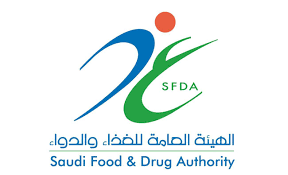The Saudi Food and Drug Authority (SFDA), the country’s regulating authority in the sphere of medical devices, has published guidance dedicated to the labeling requirements medical devices should comply with in order to be allowed for marketing and use.

Regulatory Background
The present guidance is intended to provide additional clarifications and recommendations with regard to regulatory requirements for medical device labeling in order to assist manufacturers and other parties involved in achieving and sustaining compliance with the Medical Devices Interim Regulation.
First, the document provides definitions of the most important terms, including the following:
1. Labelling – means written, printed, or graphic matter (a) affixed to a medical device or any of its containers or wrappers, (b) information accompanying a medical device, related to identification, technical description, (c) information accompanying a medical device, related to its use, but excluding shipping documents.
2. Instructions for use – means the information provided by the manufacturer to inform the device user of the medical device`s intended purpose and proper use and of any precautions to be taken.
3. Advertising of Medical Devices – means any form of information, canvassing activity, or inducement intended to promote the supply or use of medical devices.
4. MDMA – Medical Devices Marketing Authorization, permission necessary to place a medical device on the market.
In order to be eligible for Medical Device Marketing Authorization, a medical device shall comply with the applicable regulatory requirements set forth in Australia, Canada, Japan, the USA, and the EU/EFTA, and also with the applicable requirements set forth in Saudi Arabia.
According to the present SFDA guidance, labeling is intended to identify the product and its manufacturer, describe its intended purpose, the way it should be used, and also inform about the risks associated with the medical device. The labeling shall contain details about warnings, limitations, or contradictions.
It is also important to mention that the scope of the term “Labelling” covers the label itself, instructions for use, as well as any additional information provided by the medical device manufacturer. Further, the guidance describes each type of information, namely:
1. Label – information about a medical device, provided in a textual or visual format, placed on the medical device itself, its packaging, or a package insert.
2. Instructions For Use (IFU) states for the information to be provided by the medical device manufacturer in order to inform its potential users about its intended purpose, the way it should be used, as well as precautions to be taken. However, if the medical device in question could be used in a safe and efficient manner without additional information, the manufacturer is allowed to abstain from providing the IFU. The IFU could be placed on the medical device itself, its packaging, or an instructions leaflet.

General Labeling Requirements
As in the case of other regulatory requirements, labeling should comply with the rules set forth by applicable provisions of the regulations adopted in certain jurisdictions, including Australia, Canada, Japan, the USA, and the EU/EFTA, and also with the relevant national requirements.
With regard to the first point, the manufacturer applying for marketing authorization shall submit copies of labeling already approved by the foreign regulating authority in the format that it will be used in the KSA. The regulating authority will assess compliance with the applicable regulatory requirements in terms of completeness of the information provided, language used, and suitability for medical device identification and tracking purposes.
The labeling for medical devices intended to be placed on the domestic market should be provided in Arabic and/or English. However, in the case of a medical device intended to be used only by healthcare professionals, labeling in English could be sufficient. Should the space on a medical device intended to be used by laypersons be insufficient to place information both in Arabic and English, information should be provided in Arabic. The way the information is provided should be understandable for intended users of a medical device based on their knowledge and qualifications.
The approach to be applied with regard to the instructions for the handling, storage, transportation, installation, maintenance, and disposal of medical devices is almost the same. In the case of medical devices intended to be used by healthcare professionals, the primary language should be English, and Arabic should be used when it is reasonably necessary. Should the device be intended to be used by laypersons, such information should be provided in both Arabic and English. The wordings used should be understandable for the potential users of a medical device.
The same approach applies with regard to advertising requirements: if the device is intended to be used by healthcare professionals, all marketing information could be provided in English. Otherwise, the use of Arabic is required.

Additional Requirements to be Considered
The document also describes additional regulatory requirements the labeling for medical devices should meet. For instance, in the case of a medical device requiring a/c power supply, information about the nominal frequency and the voltage is required. Additionally, it is important to include information on operating temperature, humidity, and the potential impact of electromagnetic disturbances and the ability of a medical device to withstand them.
According to the guidance, there are specific requirements with regard to the particular format the information about medical device should be provided in, namely:
1. Information contained in a label should be provided in a human-readable format in accordance with the requirements on language as described above. However, it could be accompanied by RFID or bar codes.
2. Under the general rule, electronic Instructions For Use (eIFU) are allowed. At the same time, the medical device manufacturer shall ensure they are accessible for potential users of a medical device. Moreover, it should be clear for a potential user how the correct version could be found. Additionally, there should be an option to obtain the IFU in paper format. It is important to mention that eIFU is allowed only for medical devices intended to be used by healthcare professionals, while in the case of medical devices intended to be used by laypersons, the paper format is mandatory.
The SFDA guidance further outlines the scope of specific information to be included in labeling. According to the document, the labeling shall not contain the logo of the regulating authority or the registration number of the manufacturer (the Establishment National Registry Number). At the same time, it could include the number assigned to the medical device itself – the Medical Device National Listing Number, which is connected to the Medical Device Marketing Authorization granted by the authority.
Should the labeling contain the indication of compliance or approval used in another jurisdiction, such as CE marking, the regulating authority is entitled to require the manufacturer to provide additional confirmation demonstrating that the medical device in question actually complies with the applicable regulatory requirements the indication refers to.
In summary, the SFDA guidance on medical device labeling requirements highlights the main aspects to be considered by the manufacturers and other parties interested in placing medical devices on the KSA market. The document describes in detail the scope of information the labeling shall contain, as well as regulatory requirements with regard to the particular way such information should be presented.
How Can RegDesk Help?
RegDesk is a next-generation web-based software for medical device and IVD companies. Our cutting-edge platform uses machine learning to provide regulatory intelligence, application preparation, submission, and approvals management globally. Our clients also have access to our network of over 4000 compliance experts worldwide to obtain verification on critical questions. Applications that normally take 6 months to prepare can now be prepared within 6 days using RegDesk Dash(TM). Global expansion has never been this simple.
Sources:

